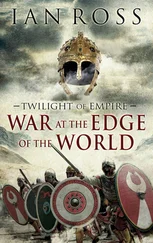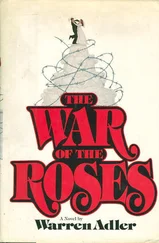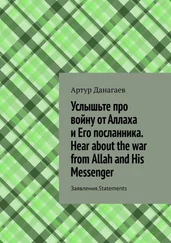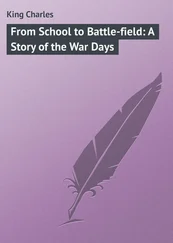Many people regret that they have left more peaceful places in haste. Olha, holding onto a child, is standing in front of the apartment building that was recently hit. She has returned from somewhere in the Donetsk region. She crosses her arms. “What are we supposed to do?” she asks.
The Parastate in the Making
The city itself looks very militarized. The ratio of “men in uniform” to civilians is overwhelming. When I walk in the Donetsk streets I see people with guns in camouflage outfits.
“Documents, please! It’s standard procedure. There is martial law.” An insurgent stops me on the main street. In the center you can’t see any cars labeled milicja but policja , just like in Russia now. They stop all the vehicles and check the drivers.
In the first half of October I was coming to Donetsk from Dnipropetrovsk by minibus. Despite the fighting, buses were running everywhere. At the entry checkpoint my bus was stopped. A militant got in and asked sarcastically in Ukrainian: “Any cute boys from Lviv here?” Nobody reacted, so he got off.
The next checkpoint was more serious. All men aged from eighteen to fifty-five had to get out and show their documents. Of course, when they saw a Pole and my friend, a Slovak photographer, they got very interested and decided to check our papers more carefully. Poles, in particular, raise their suspicions. Back in July in Donetsk, when a Polish journalist was detained, the separatists told him that he had a “fucking shitty passport.” Some representatives of the insurgents don’t want to have anything to do with Poles. It’s because there is a myth among them that Polish mercenaries fight on the Ukrainian side. The problem is that no one has ever seen them. And the only Poles engaged in this conflict happen to fight for the separatists.
Another element of control is curfew. Earlier it was taken with a pinch of salt. Now the jokes are over. Really, it would be better if you didn’t walk the streets in the evening. The curfew begins at eleven at night and lasts until six in the morning.
“There are two strategies. Some people say that you shouldn’t leave your home at nine p.m., others that you shouldn’t do it after ten p.m.,” a friend who has been in Donetsk for quite a while tells me.
The first place any journalist arriving in Donetsk has to visit is the Donetsk Regional State Administration building. In the past it was the office of the local Ukrainian government. You can get a so-called civilian accreditation here. It is quite funny but for a long time even the representatives of the Donetsk People’s Republic (DPR) called this building the “regional administration,” which suggested that it was still a part of Ukraine. Now they call it Government House, just like in Belarus or Russia.
The most striking change, however, is not about aesthetics or symbols but about organization. Inside the building it is more orderly. On each floor there are special information desks that provide assistance. The Press Center is on the seventh floor. Here I get my new accreditation. On other floors there are “ministerial” offices, a first aid station, and various agencies providing financial aid for insurgents’ families and refugees. Those who lost their apartments or houses due to the shelling can apply for some assistance, too. How many people get what they ask for, and how many are sent away? I don’t know. But every day you see a larger or smaller group of claimants.
It is clear that Novorussians try to keep the building well ordered. The bureaucracy is expanding because the DPR has to guarantee jobs for its citizens. For the time being, the owners of private shops and small businesses can’t be forced to open them, so other options are pursued. Fighting in the units of Novorossiya is also a job. There are attempts to start industrial plants. But how to find funds for all this? No one knows, and the “authorities” emphasize that the money they collect from taxes (the taxes are imposed) is not enough.
There are more organizational questions than answers. In late October a message appeared on the website of the DPR Press Service: “The Court is functioning in the Donetsk People’s Republic.” The recruitment of judges was announced and the presiding judge of the Supreme Court was chosen. But a question comes to my mind: “What kind of law will these courts follow?”
It’s true that the “constitution” was approved back in June, but it is only a formal and legal framework. On the one hand, the self-proclaimed authorities declare that they want to be an independent and democratic state. On the other, they affirm their attachment to Soviet traditions.
Asking about how city and communal institutions work here turns out to be problematic. “Everything is all right. We work as we did before,” a doctor tells me but he doesn’t agree to be recorded. The hospital administration barred him from talking to the media.
In the schools, children follow the program set by the Ukrainian Ministry of Education. “The only thing that has changed is one hour of Russian that was added to some grades,” says the principal of a Russian-language school. Most of the instructions come from Kiev. To demonstrate this, this woman shows me some documents with Ukrainian emblems. Ukrainian is still being taught. But Ukrainian history has been postponed until the second semester. Schools with classes taught in Ukrainian are functioning as well. Only the schools near the airport were not opened after the summer vacations because it would be too dangerous. Children living near the airport can attend other schools in Donetsk. They were all opened on October 1, but according to the principal they will catch up with the syllabus because the fall break has been cancelled. However, there are rumors that the program will be changed soon. At the universities, too.
The separatists have even decided to impose their new time. In the DPR clocks don’t run on Kiev time. The hands of the clocks are set one hour forward.
Novorossyans are more and more sure that they will create a separate and independent state. They realize that they have a long way to go. In September there was a summit in Minsk that de facto sealed Ukraine’s loss of large parts of the Donetsk and Luhansk territories. Even earlier, Novorossyans published an article on their website Russian Spring , entitled On the Way to a Great “Transnistria.” Its main thesis was that Ukrainian president Petro Poroshenko couldn’t immediately recognize independent Novorossiya, but he would do so in the end since he had no other choice.
Right now it’s a stalemate. Both sides are in their trenches, and they can’t take a single step forward.
This report is dated October 2014, Donbas.
WHEN I ARRIVED in Slovyansk for the first time, I didn’t think I would write a book based on my observations. Only when I went to Donbas for the fourth time did I decide to write something more than press or internet articles or do more than broadcasting for radio or TV. I didn’t want to lose “the moment.” That’s why this book is partly based on my texts that were published in Dziennik Opinii, Nowa Europa Wschodnia , and New Eastern Europe . The last two chapters are extensively based on my articles from Tygodnik Powszechny . I finished writing in October 2014 in Donetsk, when the fighting was going on full blast.
This book would have never been written if it weren’t for many people who were so kind to me. First of all, I thank my mother who supported me to the very end, although she was skeptical about my travels and worried all the time.
I thank Ania, Jarek, Małanka, and Ostap Junk on whom I can always rely. I thank all the people with whom I traveled all over Donbas and spent many hours talking. These are, first of all, Piotr Andrusieczko, Piotr Pogorzelski, and Tomáš Rafa.
Читать дальше








![Theresa Cheung - The Dream Dictionary from A to Z [Revised edition] - The Ultimate A–Z to Interpret the Secrets of Your Dreams](/books/692092/theresa-cheung-the-dream-dictionary-from-a-to-z-r-thumb.webp)



